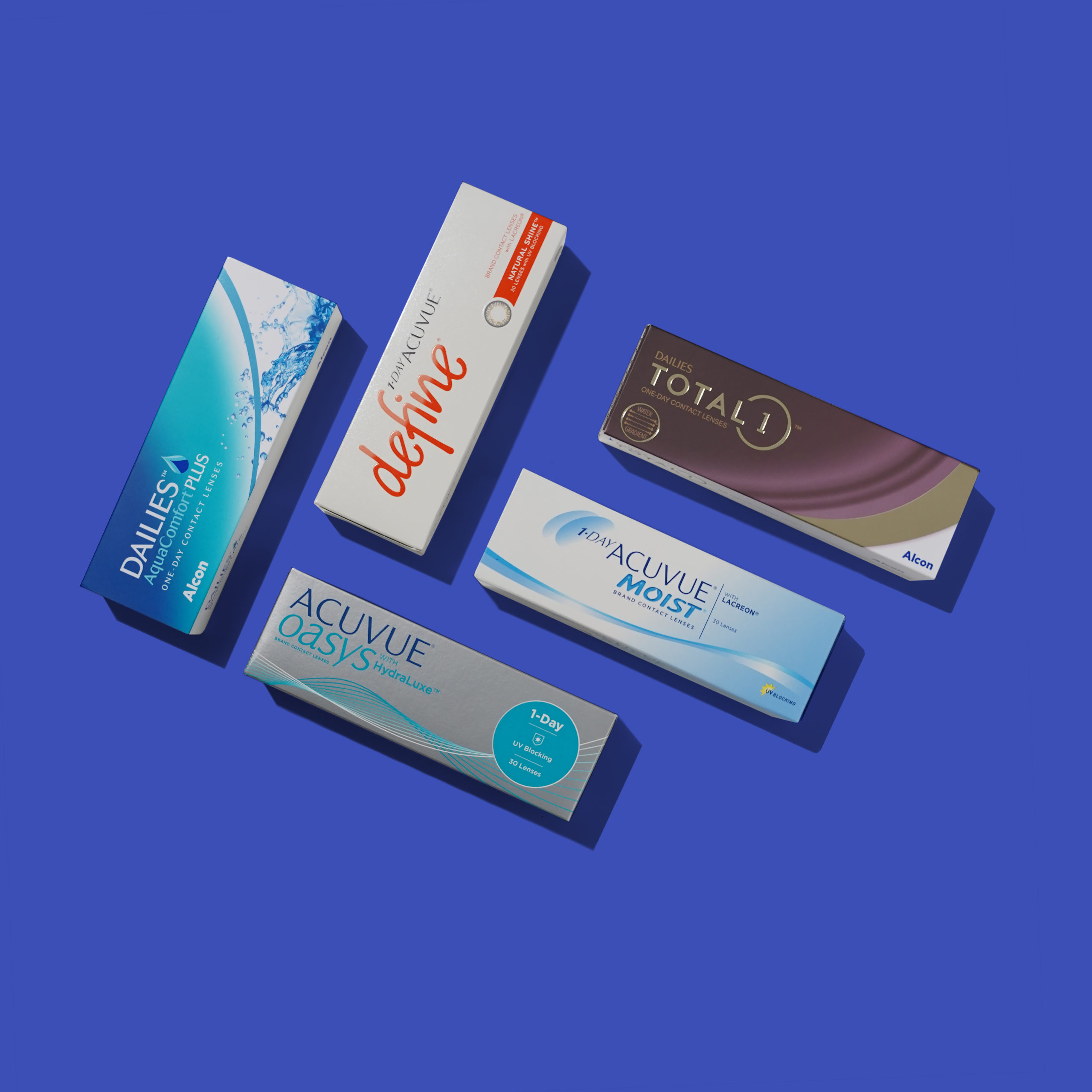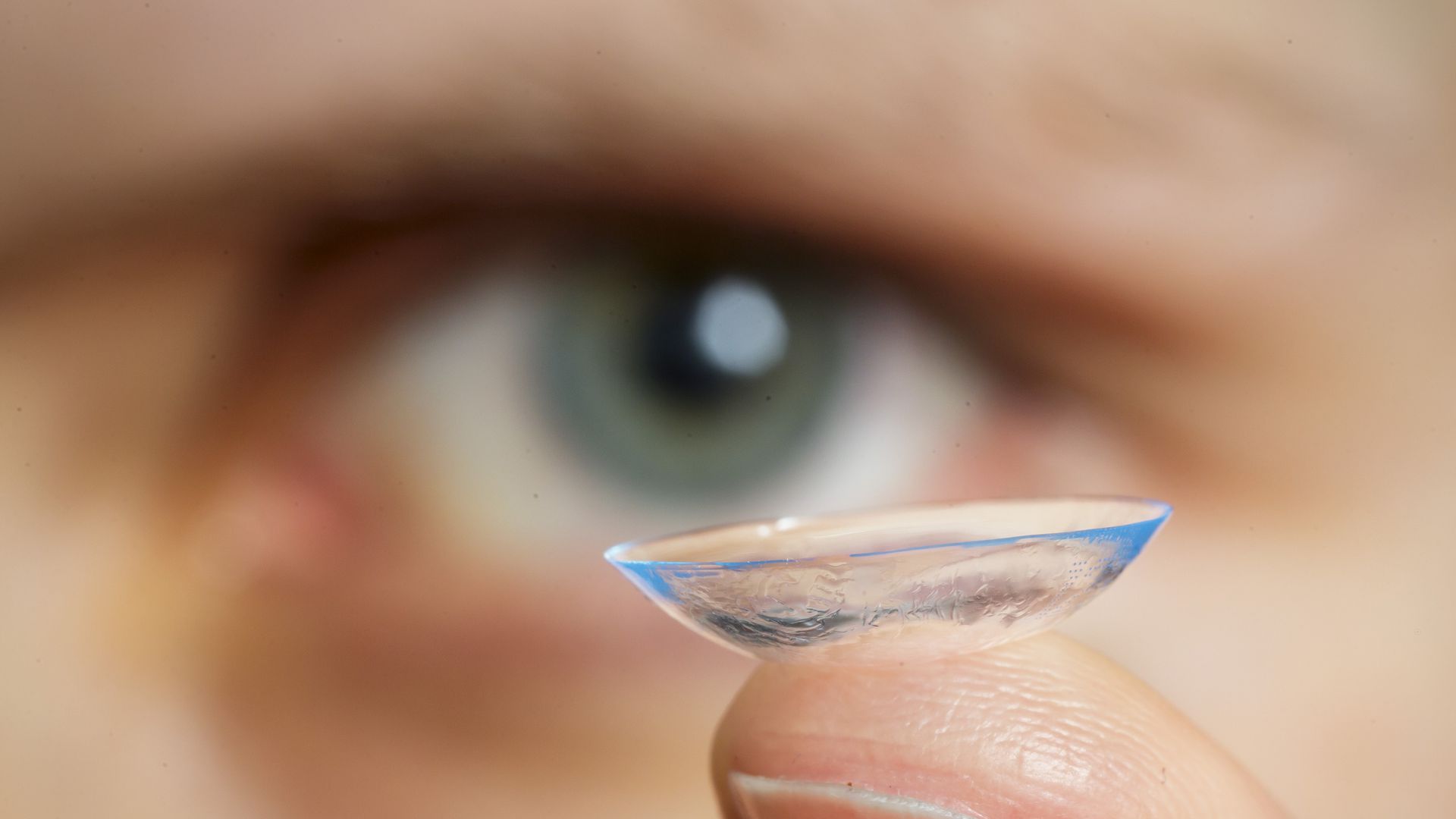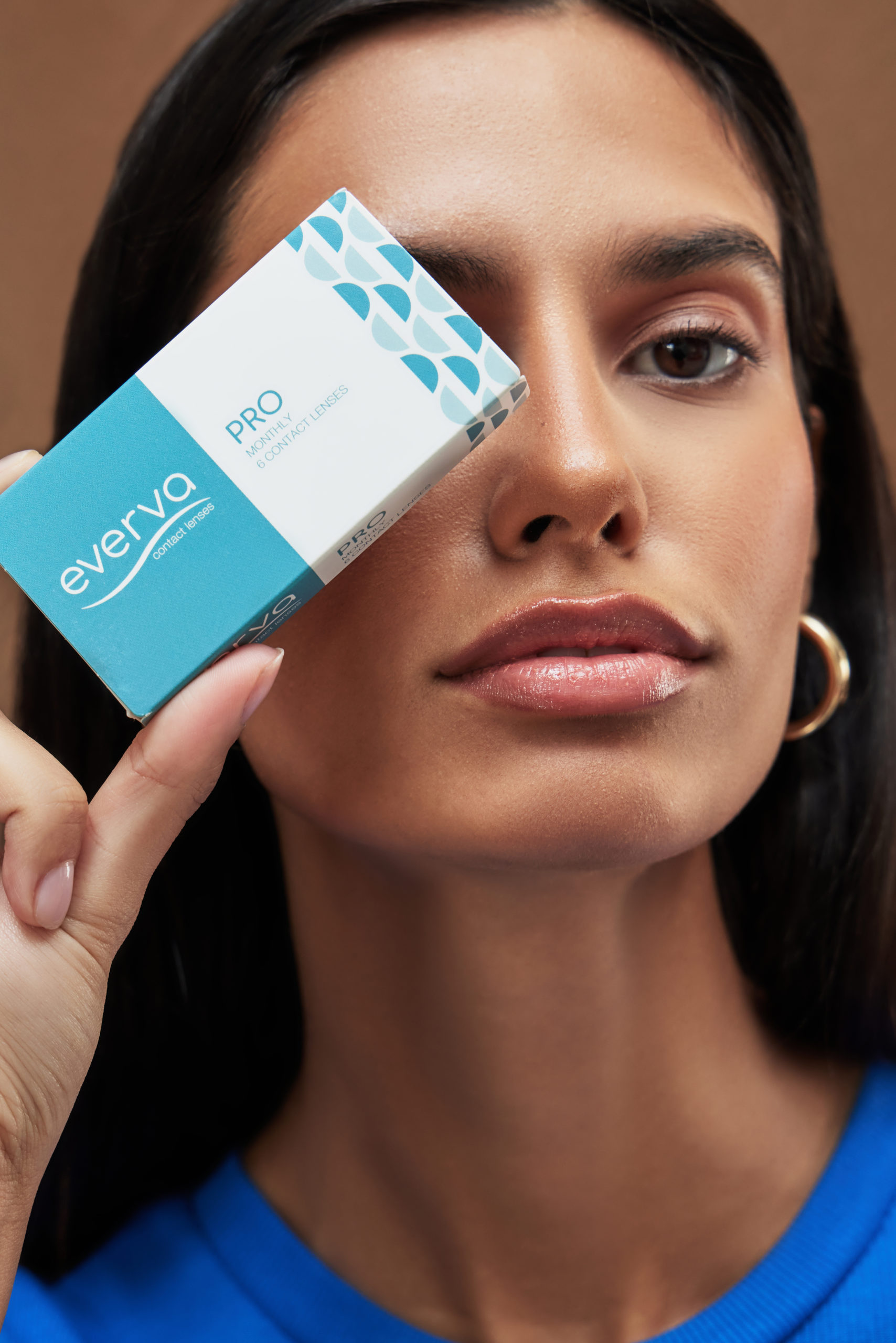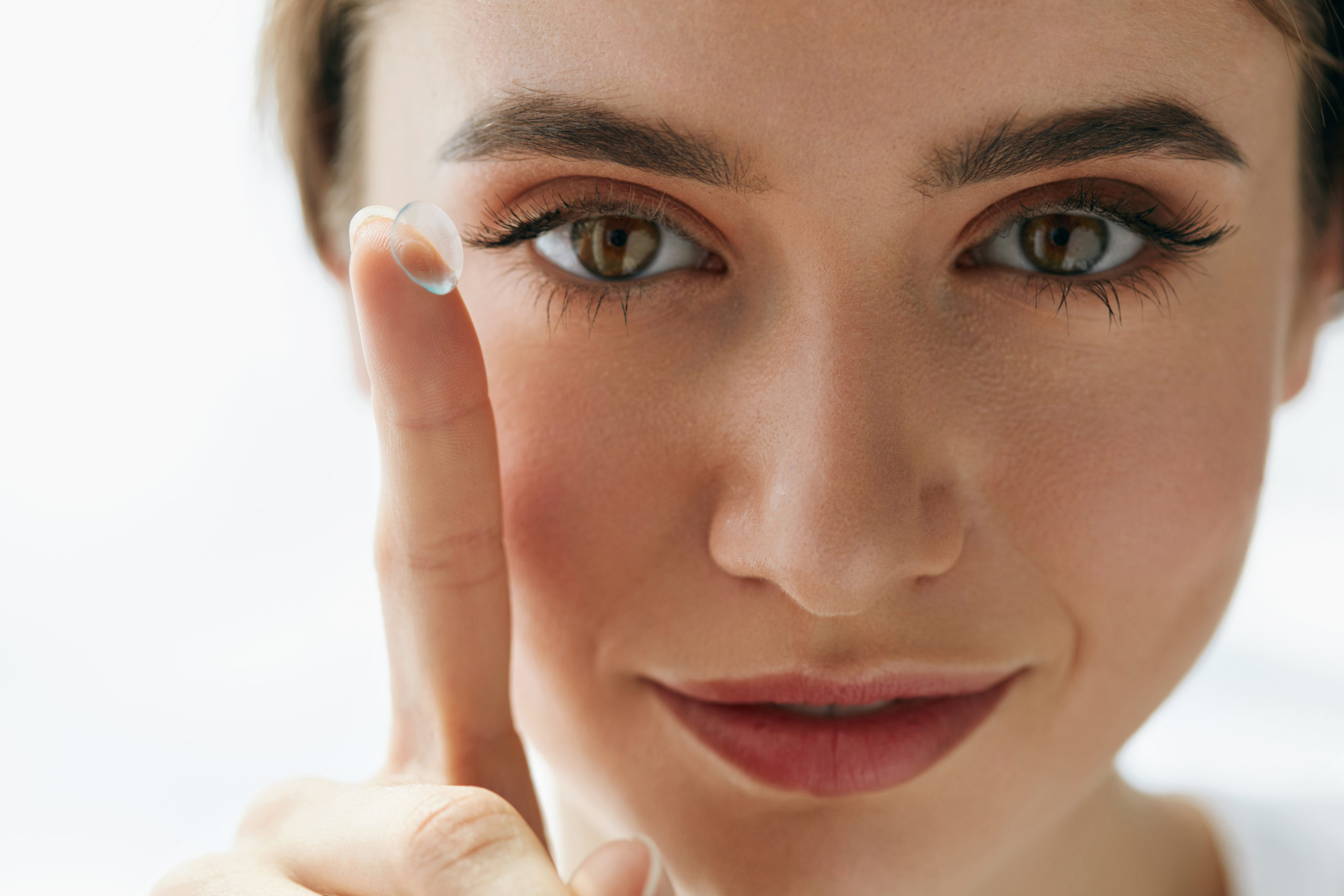Did you know?
About 4 billion adults use prescription eyewear worldwide, out of these, 64% wear glasses. Most people use eyeglasses for corrective purposes, while few may use it to deliberately alter the appearance of the eye, or occasionally to protect the eyes against the harmful UV rays of the sun (sunglasses).How to choose the best lenses for your eyeglasses?
The most important part of your eyeglasses is certainly the lenses. In fact, choosing the right lenses for your eyeglasses should be the first thing to come to your mind while you plan to move ahead with the prescription eyewear. There are a plethora of types of lenses that can help you find your way out of the limiting eyeglasses or just do the sports activities you were longing to do. That perfect pair is actually the real thing that makes your vision clear and comfortable. We have got you covered. Here are the whats, whys and hows of choosing the best eye lenses for your glasses:
For all the visual needs choose your lenses primarily by the vision-correcting properties you are looking for. As per your visual requirements, you may need to use either single-vision or multi-vision lenses.
Single-vision lenses can be used to improve vision sufficiently, either for reading or distance.
- Single-Vision Reading lenses help you see things placed closer, somewhere between 30 and 40 cm. Expect your lenses to be curving outward (convex). Such lenses are appropriate if your prescriptions begin with a (+).
- Single-Vision Distance lenses are used to fix your vision problems if you have nearsightedness, which means you find seeing distant objects difficult. Your distance-corrective lenses will be curving inwards (concave). The prescription will begin with a (-).
Do you find difficulty in seeing at both close and far ranges? Then you may need bifocals or multifocal. These eye lenses help correct your vision at varied distances. All you get is a clear vision — both up close and from a distance.
Multifocal lenses have two or more lenses that are designed to help you see objects at all distances
Bifocal lenses combine two prescriptions into one single lens and thus correct both near- and long-distance vision. The upper part of the lens is made to correct long-distance vision, while the lower part is meant to correct close-up vision.So, if you use both reading and distance glasses, bifocals let you not carry two pairs of glasses.Bifocals will show up with an obvious demarcation line in between the two lenses. As the wearer’s eyes cross the junction of the far and near segments, an image jump for a split second can be noticed. Some modifications were incorporated within the new style bifocals to lessen this image jump.
- Invisible bifocals do not have a visible line dividing the far and near segments.
- Blended or seamless bifocals are the ones with a polished segment line, hence do not appear as a distinct line. However, this type of bifocals have some blurry vision in the area of blending.
A better solution to this problem is using progressive lenses.
Progressive lenses provide you with the vision and comfort of the bifocals but appear as single vision lenses. Progressive Lenses are as unique as your eyes, designed to seamlessly incorporate distance, middle- and near- vision correction. Progressive lenses allow your eyes to focus quickly from a far to a near object. These lenses are highly personalized, and they can correct even the most unique eyes. Not all progressive lenses are made the same. They may differ depending on size and function. One popular type of progressive lens is Computer progressive lenses, also known as “office lenses” or “near variable focus lenses“. Do you use a computer for more than 4-5 hours a day? Think visual fatigue and posture problems are gradually peeping in? Here is a solution. Computer progressive lenses are variable focal lengths and are intended to provide clear vision at around 16 inches to 6 feet. Computer lenses dramatically increase visual comfort and help relieve eye strain.
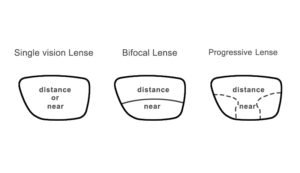
Aspheric lenses are not only in prescription eyeglasses, but also available in reading glasses. If you have a strong farsighted prescription and worried about the bulging appearance of your lenses, opt for aspheric lenses.
HD lenses: Better than the best
High-definition (HD) lenses involve scanning the eye to produce a pair of lenses ideal to suit your visual needs. With the precision and customization, HD eyeglass lenses are usually at least marginally better than traditional basic lenses.
Wavefront lenses for eyeglasses are a newer type of HD lenses. A specialized instrument receives a wavefront of light by sending uniform light waves into your eye. This allows an extremely detailed evaluation of all the optical imperfections and the manufacturer can provide you with even further customized vision solution through such highly personalized lenses.
Lens Coating: Do you know enough?
Add a coating and you can add a new power to the lenses. It can allow them to behave differently as per changing environment, change colors depending on the lighting, and even offer protection from sun or scratches. Want to understand the options available to you in detail? Here you go!
Anti-Reflective Coating: You do not need to get disappointed with that perfect click of yours being ruined by a reflection. Anti-reflective, or AR lens coating helps avoid annoying glare and reflections on your lenses caused by lights and/or computers, or driving at night. Removing reflections make your lenses almost invisible. You face-to-face conversations and photography sessions are no longer hard nuts to crack.
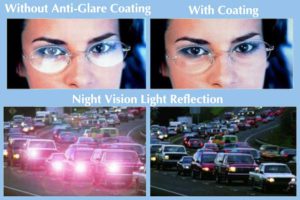
Anti-reflective coating is particularly important if you are having high-index lenses but what are high-index lenses?
These lenses have higher refractive indexes, which allow them to reflect up to 50% more light than the traditional lenses, thus causing more glare. The suggested prescription range for high-index lenses is around +/-6.00 to +/-8.00 sphere. The lenses are a high-index plastic material. So you see you may have a strong prescription, however, you can still wear a lightweight and thin lens. This ensures more comfortable glasses even if your farsightedness, nearsightedness, or astigmatism prescription is high.
- Trivex 1.54 Index lenses are the most lightweight lens material to date. These are thinner and lighter than plastic or glass lenses, impact resistant, blocks 100% UV rays. The optics is crisper and superior.
- High Index 1.67 & 1.74: What is better than thinner and lighter lenses? Thinnest and lightest, yes! Both come with 100% UV filter. High index lenses are most suited for prescriptions -6.00+.
Anti-Scratch Coating: An anti-scratch coating adds extra layer of protection by defending your lenses against scratches and abrasions from routine wear and tear. The rub marks while drops are covered too to some extent.
Anti-fog Coating: Lens fogging can prove dangerous in emergency situations. When the lenses are significantly cooler than the surrounding air, tiny water droplets may form on the surface of eye lenses. Anti-fog coating spreads these water droplets uniformly across the lens surface and thus become invisible. You are also covered during sports and times you feel hot and perspiring.
Light-Adjusting (Transitions photochromic) Coating: Does your work need you to switch from indoor to outdoor environments frequently? A light-adjusting coating is here to help you out. The lenses’ colors change depending on the amount of light they are exposed to. They become dark outdoors and clearer indoors. You also get nearly 100% protection from the harmful ultraviolet (UV) rays of the sun.Another beneficial thing can be a UV treatment for the eye lenses. It employs an invisible dye that blocks UV rays.
Polarized Coating: Are you someone who drives or bikes frequently along slick roads? Polarized coating reduces the annoying, distracting and even obtrusive reflections that water, roads and other surfaces can create on your lenses.
Water-Repellent Coating: Like to be and around water? Lenses will be no interference with the water-repellent coating on! These keep water droplets, dirt, and smudges off your lenses.
Eyeglasses: The better half
While the type of lenses you choose for your eyeglasses brings you a clearer vision, relaxed eyes and reduced eye fatigue, it’s no brainer the eyeglasses hold them in place and also impart the style you want to exude and the lifestyle you live. Choosing what glasses will work best for you amid the amount of choices can truly be overwhelming.
Finding those perfect frames
Looking for best eyeglasses to suit your face shape?
Here’s your go-to guide for choosing eyeglasses as per your face shape:
1.Round Shaped Faces: Choose frames that are equally wide as tall. This gives your face a slimmer appearance. Do not wear round shaped frames, they can add extra diameters to the shape of your face. Opt for eyeglasses with strong angles and lines. These can add definition and downplay the cheeks fullness. Look for vibrant prints, patterns, and add contrast.
Quick tip: Never choose frames that sit directly on your cheeks.
2. Square Shaped Faces: Are you a glasses wearer with a square-shaped face? Opt for glass frames wider than they are tall. This will help slim down your face. Choose frames that offer lots of curves. You are having strong jawline and sharp facial angles, by default. A curvy frame will add contrast and soften the angles in your face. This way, you won’t exaggerate an already-angular and edgy look. Go for soft and neutral colors such as beige, cream, and taupe. Blush pink and soft lavender are some of the trendsetters.
3. Oval Shaped Faces: Choose frames as wide as or only slightly wider than the broadest part of your face. Opt for a classic rectangular or square shape for a studious look, a cat-eye for a retro makeover. Good thing is you can wear a round frame with no fears. Just keep in mind, you cannot afford to detract from the natural balance of your facial shape and features. Glasses with detailed embellishments also help enhance the high cheekbones, typically found on oval faces.
Quick tip: Act carefully when choosing oversized frames, it may disrupt the natural evenness of an oval face.
4. Heart Shaped Faces: Choose frames that help minimize the upper part of your face and make the chin look a bit wider. This way, glasses frames that are wider than your forehead will help do both. The trick is to draw the attention away from the forehead. You can try an interesting DIY by just adding some decorative accents at the endpoints of the frame.
5. Diamond Shaped Faces: Wear frames that have angular, edgy elements. These elements can complement the angular features of your face, soften the cheekbones and fetch attention directly to your eyes. Learn to appreciate that you have distinctive cheekbones, full cheeks, parallel narrow eye lines, and narrow jawlines.
Quick tip: Avoid narrow eyeglass frames. These can further emphasize your narrow eye line.
6. Oblong Shaped Faces: Focus on tall eyeglass frames. This will help create a well-proportioned facial shape and symmetry. Broad frames styles with decorative temples will help add width to your otherwise long, slender face. You may already have high cheekbones, a long nose, and a tall forehead. You can opt for frames that bring attention to the high cheekbones and put off eye from the forehead.
Answers to your most commonly asked questions
1.How often should you get new glasses?
Answer:- Most optometrists recommend updating your prescription every 2 years, or earlier, if needed. Don’t wait to have a hard time seeing through your old glasses. This can put your eyes into undo stress. Looking for following signs can help you track of right time to change your glasses and switch to a new pair:
-Blurred vision
-Feeling extreme tiredness or strain in eyes
-Frequent headaches that usually come up during hours of actively wearing glasses
-Halos around lights
– Lose your spot or skip lines while you read.
2. What is astigmatism?
Answer:- Astigmatism is a common eye condition that causes blurred vision. It occurs when the clear front cover of the eye is irregularly shaped or sometimes because of the lens curvature inside the eye. Astigmatism can be treated with eyeglasses, contact lenses and LASIK surgery to help you regain your eyesight. It’s not an eye disease but simply a refractive error like nearsightedness and farsightedness.
3. How to read an eye prescription?
Answer:- You can see some numbers against something such as “OS” and “OD”. They are Latin abbreviations. OS refers to the left eye and OD to the right one. At times, you will see “OU”, that implies something involving both eyes. The numbers tell about the focusing power of the lens as to what your eyes require. They are mentioned in diopters, the unit used to measure the correction, or focusing power. A “plus” (+) sign in front of the number means you are farsighted, and a “minus” (-) sign means you are nearsighted.
4. Can you put new lenses in old frames?
Answer:- Yes, why not! You don’t need to throw your favorite frames because your prescription has changed. A prescription eyeglass lens replacement service will replace the lenses in your existing frames and you are good to go.
5. Do glasses help with eye strain?
Answer:- Regular basic eyeglasses do not help to reduce eye strain. You will need computer reading glasses that are specially made to help reduce eye strain. The anti-glare coating helps reduce glare and reflections and comes with a tint that helps increase contrast for a more comfortable viewing.

